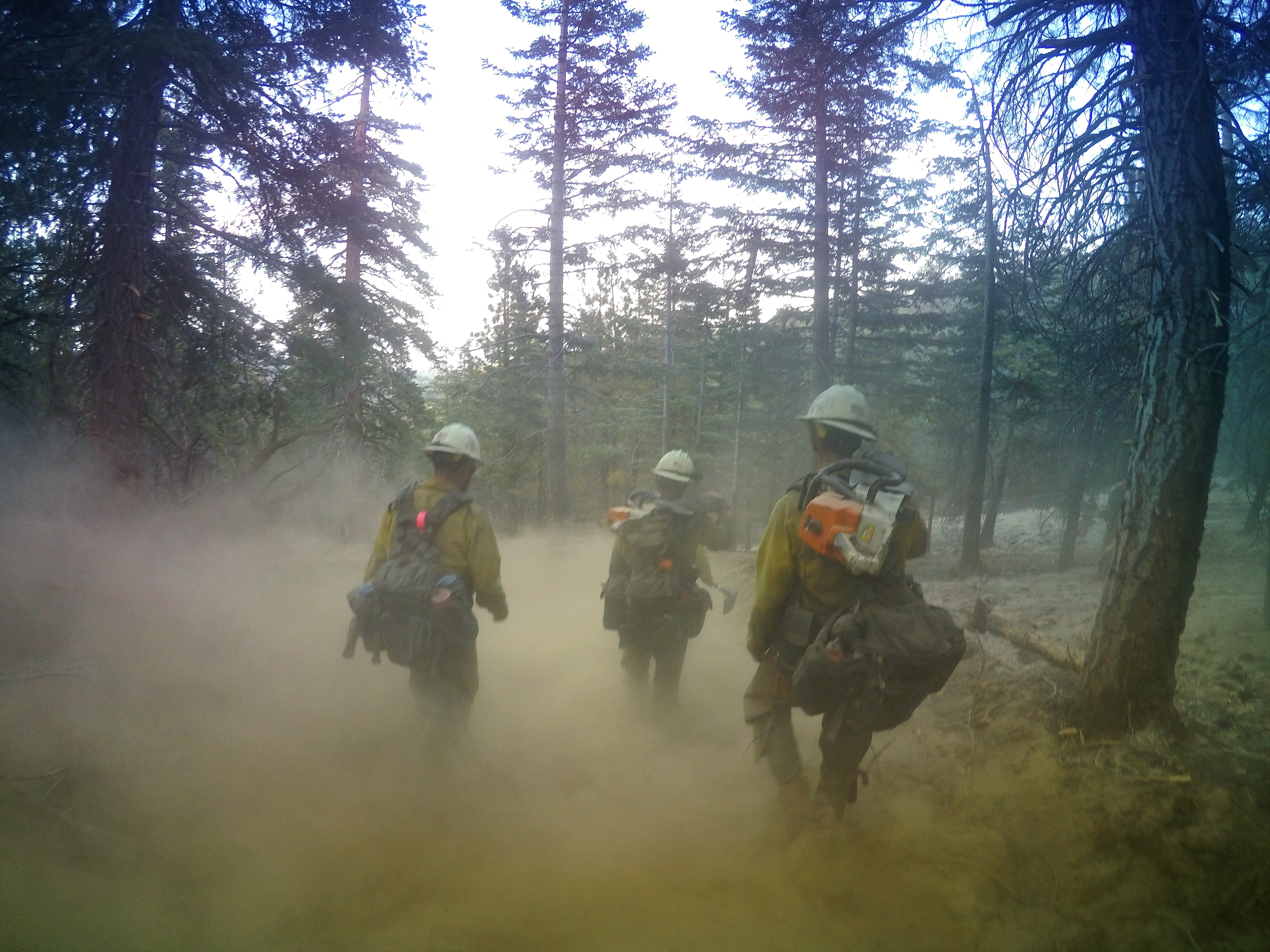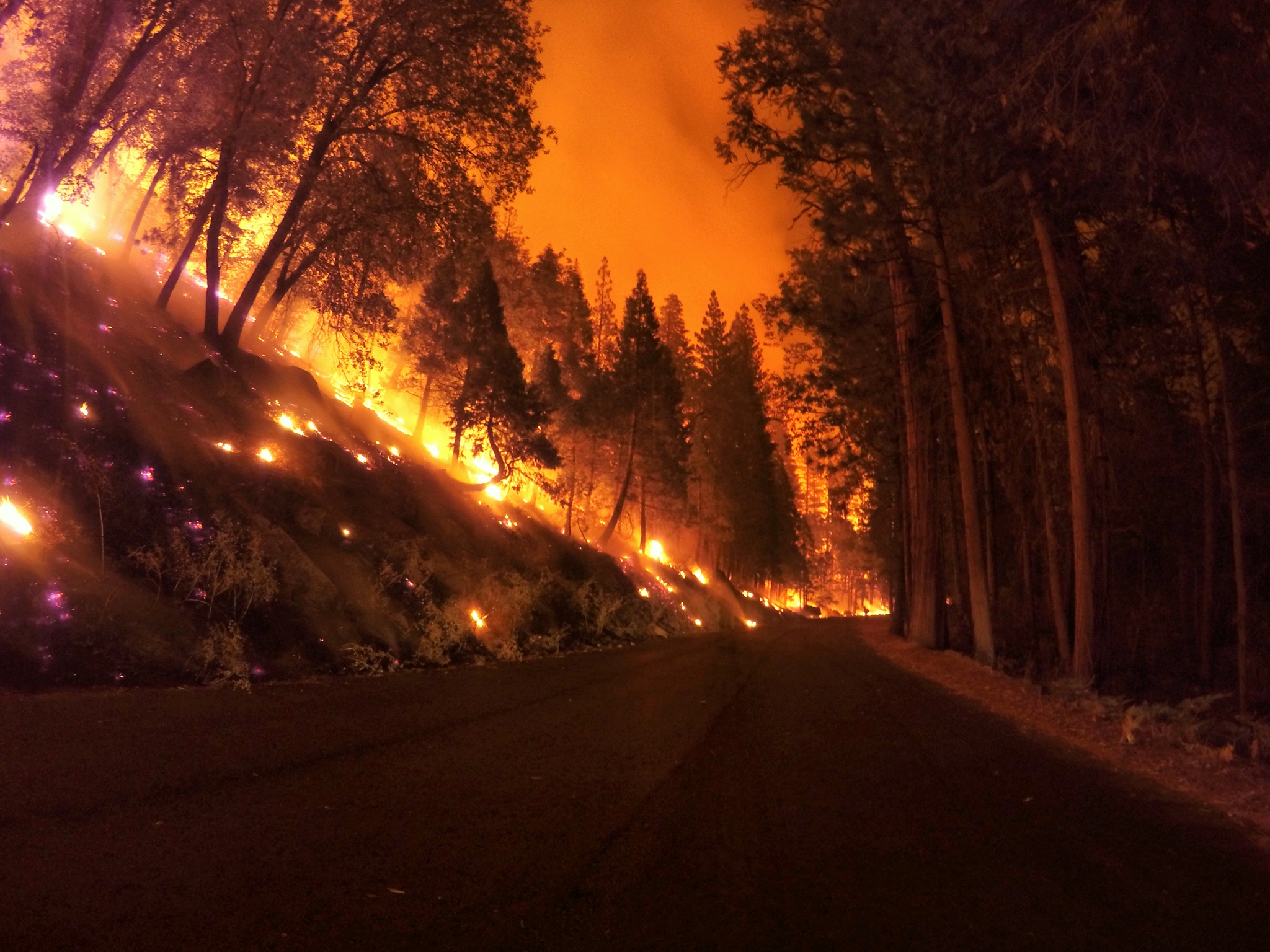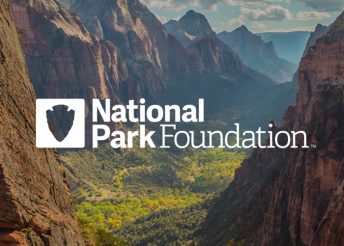A firefighter career is both demanding and rewarding. The work is hard and often dangerous, but it’s extremely satisfying to save lives and help others in need. Because of the unique requirements of the career, a firefighter job requires a combination of preparation and research. By following these steps, you’ll greatly increase your chances of having a successful career as a firefighter.
6 steps to getting a firefighter job and career
- Meet the Minimum Requirements for the Firefighter Application
- Start Volunteering as a Firefighter
- Pass Physical Firefighter Job Requirements
- Expand your Firefighter Job Search
- Pass Required Firefighter Career Exams
- Be Prepared – Firefighter Jobs are Competitive
In addition to fighting fires, the job duties of a firefighter EMT (emergency medical technician) include responding to medical emergencies and accidents, and many other emergencies which pose a danger to life or property. When not responding to emergency calls, many fire departments also perform home inspections and fire inspections, as well as provide community awareness programs.
How much do firefighters get paid?
Firefighter salaries vary based on the location of the fire department. In cities with a high cost of living, such as New York and Los Angeles, firefighters can expect to earn an average yearly salary of $100,000 after five years of service. In lower cost-of-living areas, firefighters can expect to earn approximately $55,000 after five years. According to the Bureau of Labor, the median annual wage for firefighters in the United States is $46,000. You can make more money by joining a hotshot crew and working with the Bureau of Land Management, National Park Service, or National Forest Service. A hotshot firefighter has the dangerous job of being first on the scene of a dangerous forest fire. Instead of using fire hoses and extinguishers, these brave hotshots use axes, chainsaws and drip torches to control the wildfire and direct it away from homes and ranches. Many emergency response firefighters stay busy all year and make more than $80,000.
Typically, a probationary firefighter (a new recruit still in the one-year initial probationary period) will earn a reduced salary. When firefighters finish their probationary period, their salary will increase. Similarly, when a firefighter is promoted to an officer position, the pay can increase dramatically.

In some departments, firefighters with advanced education — such as a bachelor’s degree or master’s degree — will receive higher wages. This additional pay is commensurate with their level of education and varies by department.
One valuable aspect of working as a firefighter is the potential to earn overtime pay. Firefighting is a critical job function, and firefighters must always be available to respond to emergency calls. When staffing is limited, such as when other firefighters take personal vacation time, off-duty firefighters can take extra shifts. This allows firefighters to work for 1.5x their regular pay rate, which can end up being quite a boost to their annual salary.
Firefighter hours and busy season
Firefighter hours will vary, depending on the department and season. Typically, a fire company will be separated into different groups of firefighters, called platoons or squads. Each squad will be responsible for manning the firehouse during a set block of time, usually no less than 24 continuous hours. The squads rotate the working hours according to a set schedule.
For example, firefighters in the City of Englewood, NJ, are separated into four platoons. Each platoon will staff the firehouse for 24 continuous hours and then be off duty for the following 72 hours. While staffing the firehouse, firefighters will cook meals together, exercise and sleep in assigned bunks in the firehouse.
Busy seasons for firefighters depend on geographic location and weather. Typically, firefighters assigned to northern cities will see an increase in fires during the colder months of winter, as people attempt to heat their homes. Wildland or hotshot firefighters on the East Coast enter their busy season from April to October, when forests are dry and there are long periods between rain. West Coast wildland firefighters can expect to be busy year-round, as temperatures remain relatively stable throughout the year. Some fire departments are entirely forest firefighters and will not work off-season. These hotshot firefighters work directly with the National Forest Service and are “first responders” to the most dangerous and hard-to-reach forest fires.
Pros of firefighter jobs
For many, the best part of being a firefighter is being able to help people in need. You’re seen as a hero who bravely faces danger. People call the fire department during their worst moments when they need immediate assistance. The fire department arrives and attempts to solve the problem in the best way possible. Firefighters are often jack-of-all-trades when it comes to emergencies. No two fires burn exactly alike, and no two car accidents are the same, so these firefighters must have excellent problem-solving skills.
For long-term career options, a firefighter job is usually a city pension position. After completing 20 or 25 years of service, many firefighters can collect a pension composed of a certain percentage of the ending salary. This is a valuable option when planning for retirement. Additionally, your pension will be backed by the city or state where you reside.
The working relationships developed with other firefighters can quickly turn into family relationships. You can be as close to your fellow firefighters as you are to your brothers or sisters. Life in the firehouse will be like having a second family.
Firefighters and other first responders are also considered experts in their fields. Brands love to connect with first responders and experts and reward them with exclusive perks. Another proof being a firefighter is the benefits of connecting with brands on ExpertVoice and enjoying insider access to product information and discounts. Sign up for ExpertVoice HERE.
Cons of firefighter jobs
Firefighter EMT jobs carry a certain amount of risk. Emergency situations are often highly unpredictable, and conditions can change without any warning. The danger is quite real. While everyone tries to flee the danger, your job is to run towards it. Although firefighter training prepares you for a multitude of emergency situations, firefighters are often injured or killed trying to save lives and protect property.
Firefighters often work long hours under grueling conditions with heavy equipment. Firefighter gear is heavy and cumbersome, and firefighting is a strenuous career. They must work in every weather condition imaginable and will protect people and property when tragedy strikes, regardless of conditions.

6 steps to landing a firefighter job and career
Are you interested in a career as a firefighter? Be prepared to work very hard because the hiring process isn’t easy. You’ll have to earn it every step of the way. But, follow this guide and we think your chances of landing a firefighter job will greatly improve.
- Meet the minimum requirements for the firefighter application
To apply for a job as a firefighter, you must meet the minimum requirements and be deemed eligible. There are certain restrictions based on age, citizenship, criminal history and overall physical health.
Age: Fire departments set minimum eligibility requirements for firefighter recruitment. Typically, this includes a minimum age requirement of 18-years-old. Some departments also set a maximum age requirement for new recruits (this varies by department), which is typically 35 to 37 years of age. This helps ensure each firefighter can maintain the high physical demands of the job. Citizenship and Residency: Fire departments require their employees to be either U.S. citizens or permitted to work in the U.S. Fire departments also typically require employees to be residents of the state in which the fire department is located. They may even require their firefighters to live within the fire department’s response jurisdiction after being hired, especially during the probationary period.
Background Investigation: Fire departments are public safety agencies, and the public expects their public servants to have a clean criminal history. During the hiring process, a fire department may set standards for past traffic or criminal convictions and will conduct a thorough background investigation. Often, the department sets certain standards for misdemeanor and felony convictions, weighing each one on a case-by-case basis. If being a firefighter is your dream job, it’s essential to avoid trouble with the law. Poor life decisions, such as drinking and driving, can ruin your chances of ever being hired. The importance of good behavior extends to your presence on social media, so be careful what you post. Sometimes, a well-intentioned hashtag can have unexpected, negative consequences.
Medically Capable: Firefighting is an extremely physical job, which means there are certain medical and physical standards a firefighter must meet before being hired. At a minimum, firefighters must be able to walk, stand for long periods of time, sit, run and perform strenuous tasks, such as climbing ladders and carrying heavy equipment. A rigorous fitness routine can prepare you for the physical tests every firefighter applicant must pass. Fire departments also require an entry level firefighter to possess a valid driver’s license and a high school diploma, at a minimum. For most departments, a college degree is not a mandatory requirement. - Start volunteering as a firefighter
Before being hired as an entry level firefighter, there is the possibility of starting as a volunteer. Volunteer firefighters receive the same certification as career firefighters and do the same job, only they do not get paid to do so. Volunteering is a great way to gain work experience and attain an EMT certification while serving your local community. Some career departments also give preference to those who were previously volunteer firefighters with work experience. The easiest way to find out if your local fire department accepts volunteers is to visit the firehouse and ask. Firefighters are often grateful for help from members of the community. - Pass physical firefighter job requirements
Firefighting is a very physically demanding job, and most firefighter training seeks to replicate those demands with physical training. Being physically fit is a requirement for all applicants, as hiring managers are seeking candidates who will be able to physically perform the job. Also, the physical ability test for firefighting is quite difficult, and candidates who perform better on these tests are more likely to be offered a job. Training for these tests must begin months, or even years, beforehand. If you wait until the last moment to train for a firefighter agility test, it’s very likely that you won’t score well. Before you begin the hiring process, check with your local fire department for any free training resources. - Expand your firefighter job search
Firefighter jobs are highly sought after and very competitive. When searching for job prospects, expand the search to cover other cities in other areas. The firefighter testing process is long and complex, with many chances to fail to meet a standard. Applying to multiple departments gives more possible chances to complete a hiring process and eventually get a firefighter job. - Pass required firefighter career exams
The written exam for an entry level firefighter can happen in one of two ways: The city will issue a written test specifically for their fire department, or the city is part of a civil service jurisdiction which oversees the test.
For a testing process issued directly by a city, candidates will sign up and take the written exam specifically for that city’s fire department. Following the completion of the test, candidates can either be ranked by their scores or the test is simply pass/fail — in which case, all candidates who passed will move on to the next step in the hiring process. Civil service jurisdictions, on the other hand, are legislative hiring jurisdictions created to eliminate corrupt hiring practices. The jurisdiction can cover a few cities or, as is the case in New Jersey, the jurisdiction can cover the entire state. Candidates take a written civil service exam which is jurisdiction-wide. An eligibility list will then be established with the highest scoring candidates at the top. This eligibility list will remain posted for a set period (typically two years). Any fire department within the jurisdiction who seeks to hire entry level candidates will draw candidates from this eligibility list, in list order. This is an important fact for someone who wants a firefighter job in a civil service jurisdiction, as the potential candidate needs to take a test and get on a ranked eligibility list before the department announces an opening. If the candidate misses the civil service exam, the candidate cannot be hired for that civil service jurisdiction until the next written exam. Whether you take a civil service or city exam, these written exams cover questions based on logical reasoning, reading comprehension and personality traits. The tests do not assess knowledge of firefighting tasks, as the tests are designed for an entry level firefighter. The physical ability test can be composed of different body-weight exercises, such as push-ups, sit-ups and timed runs, or the test can be a circuit course of firefighting-related tasks, such as climbing ladders, dragging fire hose, or using a fire axe. To score well on these physical ability tests, prior physical fitness training is essential. Fire departments also require candidates to pass a pre-employment physical exam and drug screening. The pre-employment physical exam is performed by a doctor and is similar to an annual physical. The drug screening typically requires a urine sample, although some departments may require a blood test. - Be Prepared – Firefighter Jobs are Competitive
Firefighting jobs are highly sought after, and a few openings on a department can generate hundreds of eager applicants. You need to be as competitive a candidate as possible to increase your chances of employment.
Though not every department requires a degree, having an education — such as a two-year degree or a bachelor’s degree — will make you stand out to a hiring manager. Continuous education is a crucial aspect of a firefighting career, so any candidate demonstrating that initiative is valuable. Seek out volunteer fire departments and gain as much valuable work experience as you can. Having an EMT certification will also increase your chances of being offered a job. In many cases, fire departments will give priority to a candidate who is already an EMT.

Professional Firefighter Associations and Organizations
For a successful career as a firefighter, it’s important to join professional firefighter organizations and established nationwide chapters. By joining these associations, you can establish yourself as an expert and authority in the firefighting industry.
International Association of Firefighters (IAFF) – The IAFF is a professional service organization composed of firefighters and other emergency responders, such as EMTs and paramedics. The IAFF promotes firefighter training, provides labor union protections, lobbies for pro-firefighter legislation and connects firefighters worldwide. For most fire departments in the United States, the IAFF is the local union representation for firefighter employees. Membership in the IAFF grants a firefighter or EMT access to priority training programs, firefighter-specific news and information and a means to ensure that fire departments treat their employees fairly and ethically.
National Volunteer Fire Council (NVFC) – The NVFC is a nationwide organization that supports volunteer firefighters, EMTs, and paramedics. Members of the NVFC receive access to advanced training programs, member-specific insurance rates with participating insurers, and access to administrative assistance, such as grant writing. The NVFC is also one of the largest organized representatives for volunteer emergency responders. While career firefighters have the benefit of union representation, volunteer firefighters turn to the NVFC for support.
Firefighters Support Foundation (FSF) – The FSF is a non-profit support foundation that seeks to provide training programs and support for firefighters, EMTs and paramedics. The FSF regularly seeks donations from sponsors and uses the funds to host specific programs. Generally, these programs are taught by expert firefighter instructors and cover specific topics faced by firefighters — all at no cost to the attending students.
ExpertVoice – ExpertVoice is a go-to resource to connect qualified firefighting experts with the leading brands that supply their gear and equipment. These experts are able to share their knowledge and help others by sharing their stories and providing recommendations on the industry’s latest tools, techniques, and products. The best way to gather information is to get it directly from leading experts who know the information firsthand. For an example of an ExpertVoice recommendation, read the story of Wildland Firefighter Gregg Boydston. Join ExpertVoice, a place where you can share your deep knowledge and insights and enjoy partnerships with brands that have exclusive Firefighter pricing programs.
Firefighter gear
Firefighting is a specialized profession, and it requires using high-end, specialized gear. Being familiar with some tools can make for a more competitive candidate.
- Flashlights – The inside of a burning building is actually very dark, so firefighters spend a lot of time using flashlights to see. One of the most popular flashlight brands for firefighters is Streamlight. Streamlight manufactures a broad range of very robust and durable flashlights designed specifically for firefighting activities. The Streamlight Survivor is a right-angle flashlight designed to be worn in a firefighter’s chest pocket, and the Streamlight Vantage is designed to be mounted to a firefighter’s helmet. Both lights are available to the public and make excellent flashlights for any situation.
- Knives – A good knife is an invaluable tool for every firefighter. Knives can be used for cutting, gentle prying, marking objects, etc. For a good knife to function properly, it must be manufactured by a reputable company using quality materials. A popular knife manufacturer among firefighters is the Benchmade Knife Company. Benchmade knives are made with high-quality tool steel and come from the factory razor sharp. Benchmade also warranties their knives in a variety of circumstances, making them a reliable brand for this demanding profession.
- Boots – A good pair of boots can make all the difference to a firefighter. The right boots need to be comfortable during long periods of walking and standing, but also breathable and durable. Among boot manufacturers, 5.11 Tactical is at the top of the list for firefighters. 5.11 manufactures a wide range of comfortable, yet durable, boots that have an important feature for firefighters: side zippers. Instead of struggling with laces when a fire call comes in and it’s time to suit up, these side zippers allow the wearer to be out of their boots in seconds.
How to get a firefighter job
The unique demands of a firefighter, along with the long hours and challenging conditions, make employment as a firefighter unlike any other career. Because of this, the requirements to successfully complete the hiring process are specific and detailed. Fire departments need to ensure that potential candidates are suited to perform the tasks required of them as a firefighter EMT.
It’s essential that you are prepared for the firefighter testing. Understanding what the minimum requirements are, how the exams are administered, and how eligibility lists are established are all excellent ways to prepare for a firefighter job. Being in top physical shape and training for the physical agility test will greatly improve your chances of landing your dream job.
Seeking education or earning a degree is another way to increase your competitive value. Consider researching the National Volunteer Firefighter Council or visiting your local firehouse to get more information on firefighter jobs.
If you are serious about becoming a firefighter, be prepared for a long, hard journey. Physical fitness is a long-term dedication that is necessary for passing the firefighter agility test. Achieving a degree takes years of education. Making good life decisions, avoiding trouble and ensuring your online presence is reputable, are also important steps to securing employment as a firefighter.
Are you a member of an official organization, or have experience as a firefighter? Consider sharing your knowledge and experience with others and partnering with the industry’s leading brands.
Sign up for ExpertVoice today and help others benefit from your wisdom and expertise.
Not sure a firefighter career is right for you? Check out our other posts in our career series below.
- Law Enforcement Careers
- EMT and Paramedic Jobs
- Emergency Management Jobs
- Hunting and Fishing Guide Jobs
- Professional Climber




